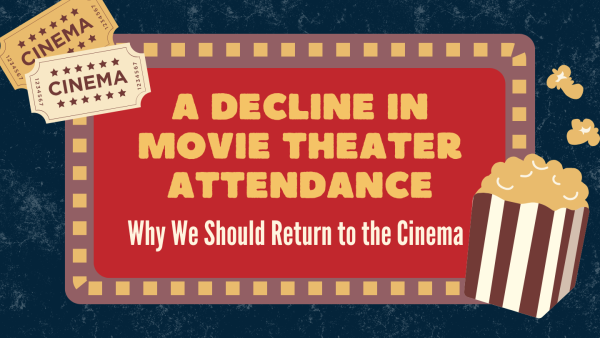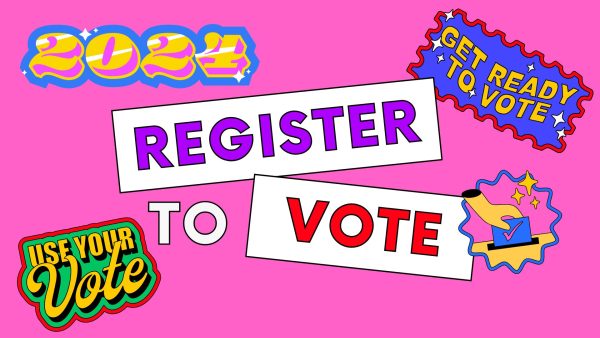An Unfinished Fight
Women must not yield in the fight for quality globally. Here’s a few reasons why we celebrate Women’s History Month & what it means to honor the memory of those who have fought for justice before us.
Photo by Elizabeth Niemiec
A PMHS student wears pin of Rose the Riveter – a symbol for women’s equality.
Last month was dedicated to celebrating the groundbreaking accomplishments that women have made from the dawn of time. From celebrating the heroism of Joan of Arc, remembering the advocacy of Sojourner Truth, rejoicing for the accomplishments of Katherine Johnson, and recognizing the work of Malala Yousafazi, Women’s History Month is an important period filled with reflection and appreciation. While we celebrate how far women have come, it’s just as important to look to the future and to acknowledge how far we still have to go to before we achieve true equality.
Among countless injustices women face around the world, here are 14 reasons why the fight for gender equality is not over yet:
- *Two-thirds of the illiterate population are women. Women account for 510 million out of the 775 million people that cannot read or write, because of the fact that girls are more likely to be denied the right to an education. In many countries, an illiterate girl has a greater chance of becoming a child bride and having children at an early age than a girl who received an education.
- *Gender violence is predominant in society. One out of every three women experiences sexual assault in her lifetime. Three out of every four women encounter sexual harassment. 4.8 million domestic violence assaults occur to women each year. One in five women on U.S. college campuses experience rape. In fact, according to the U.N., women who are aged 15-44 face a larger risk of experiencing rape than they do of getting cancer, contracting malaria, encountering war, or getting into a car accident.
- *Sexual harassment victims are not believed most of the time. “She didn’t fight back,” or “she acted friendly towards him,” are frequently used to disprove a woman’s claim of sexual assault or harassment. Only 0.7% of all rape cases result in a felony conviction. As a result, merely 2-13% of all harassment victims file a claim. The remaining 87-98% fail to out of fear of disbelief and retaliation including the loss of a job or inability to find future employment. In reality, only 5-7% of reported harassment claims are false.
- *Women are blamed for being raped. In a 2012 survey conducted by Vermont Governor’s Prevention of Domestic and Sexual Violence Task Force, 46% of participants believed that it was “sometimes true” that women who wore tight-fitting clothing invited sexual comments or advances. 33% of participants in a 2005 study conducted by Amnesty International in the U.K. believed that a woman who wore tight fitted clothing or acted flirtatiously was partly responsible for being raped. 58.5% of participants in a Brazilian study agreed that women who wore tight fitted clothing and were attacked deserved it. It’s very likely that similar views are not unique to these studies.
- *Rape culture is alive and well. Rape is often normalized and excused in society. This results from the way we teach about rape: often by teaching ways to avoid it instead of teaching people not to do it. Women are taught their whole lives to carry their keys in between their fingers when walking alone on the street, to avoid eye contact with men they pass, and to dress modestly to prevent being attacked. In contrast, because “boys will be boys,” men are hardly ever taught not to catcall, to restrain from making rape jokes, or to ask for consent. Reported reasons for rape often include a feeling of entitlement and for entertainment, two reasons that could result from the imbalanced way rape is taught.
- 250 million girls worldwide don’t have access to feminine hygiene products. Since these items are deemed as “luxury items,” not necessities, they could cost $25,000 in total in a lifetime, and therefore aren’t affordable to many women. Lack of access results in the use of old rags or newspapers and the risk of infection or other health problems. In addition, absences from school or work are prevalent, which reduce academic or job performance, hindering a woman’s ability to make a living.
- *Child marriage is still legal in 117 countries (including the United States), and 120 countries don’t have laws against marital rape. 15 million girls are married before the age of 18 each year. In addition, one-third of all girls in developing countries are married before the age of 18 and one-ninth are before the age of 15. Child marriage cuts off education and leads to an increased risk of dying during childbirth, experiencing domestic abuse, or contracting an STD.
- *Parental leave is seen as “optional” in some countries. Despite the recommended 6 months of breastfeeding after birth by the World Health Organization, many working women face difficulty in providing this to their infants. In countries such as the United States, maternal leave is optional. So, only 14% of employers provide this paid benefit.
- *Four out of every five human trafficking victims are women. It’s estimated that between 20 million and 30 million women are victims of forced labor or human trafficking.
- Women earn less than men in 97% of all jobs, despite earning the same education. On average, women make 79 cents to a man’s dollar in the U.S. The gap is wider for African American women and Latina women, who earn 60 cents and 55 cents respectively to the white man’s dollar. Globally, women earn 50 cents to a man’s dollar. At the rate we are at now, it will take 170 years to close this gap.
- Women are the head of state in only 7.4% of countries. Overall, women have significantly less political representation than men. Women account for half of the world’s population but only 24% of all of the members of national parliaments and 20% of the U.S. Congress. In addition, nearly 100 years after women were given the right to vote, the U.S. has yet to elect a woman president.
- The word “feminism” is considered to be a politically charged word. In contrast to its literal meaning, which is “the advocacy of women’s rights on the basis of the equality of the sexes,” many consider feminism to be a dirty word. They equate the movement to “man-hating” because of a few radical misandrists who misidentify themselves as feminists. It is seen as women “looking for special rights” and “victimizing themselves.” On the contrary, the feminist movement is not supposed to be belittling to men in any way: it’s about earning equal respect and opportunity. Moreover, it focuses on obtaining intersectional equality, because women who are non-white and/or a part of the LGBT+ community face the greatest amounts of oppression.
- Only 4.8% of CEOs are female. Out of the S&P 500 companies (the 500 largest U.S. publicly traded companies), only 24 of the CEOs are women.
- 214 million women do not have access to contraceptives. This leads to 67 million unintended pregnancies a year, and in countries where abortion is restricted, results in 22,500 to 44,000 deaths from unsafe abortions a year.
*While these issues are not unique to one gender, they have a much more profound impact on the population of women.
Many may argue that because American women have the right to vote, there is no need to fight for equality any longer. In terms of laws, American women have the same rights as men including the opportunity to work, vote, and have access to education.
Yes, the lives of American women have substantially improved compared to 100 years ago. That does not mean that there isn’t still some ground to cover. Moreover, there’s still rampant inequality for women in other parts of the world. You see, true equality can only be achieved when all women around the world have the same opportunities. As Americans, we should not cease to fight for the rights of women until this is accomplished.
As put by Audre Lorde, “I am not free while any woman is unfree, even when her shackles are very different from my own.”

Grade 12
"What a wonderful thought it is that some of the best days of our lives haven't happened yet." - Anne Frank






